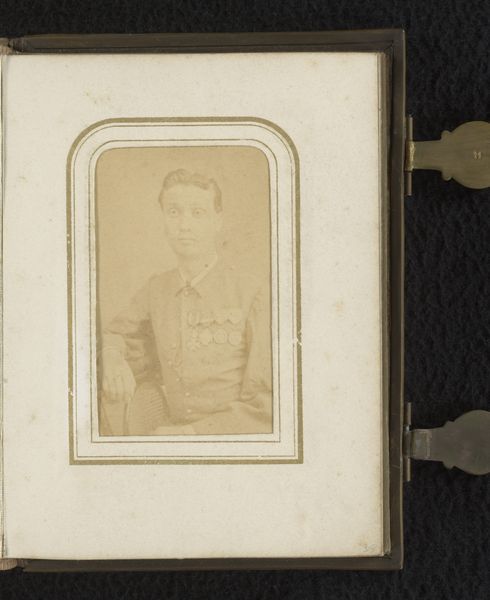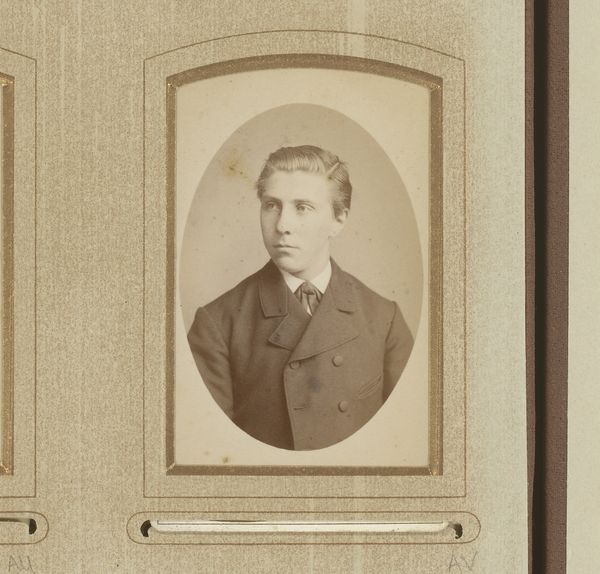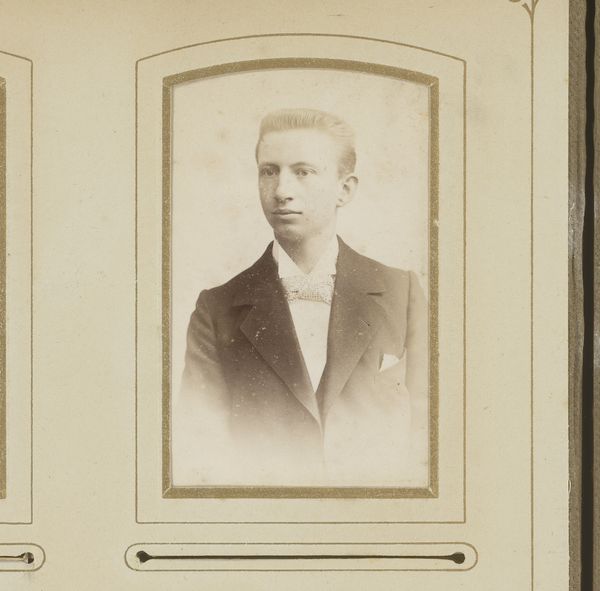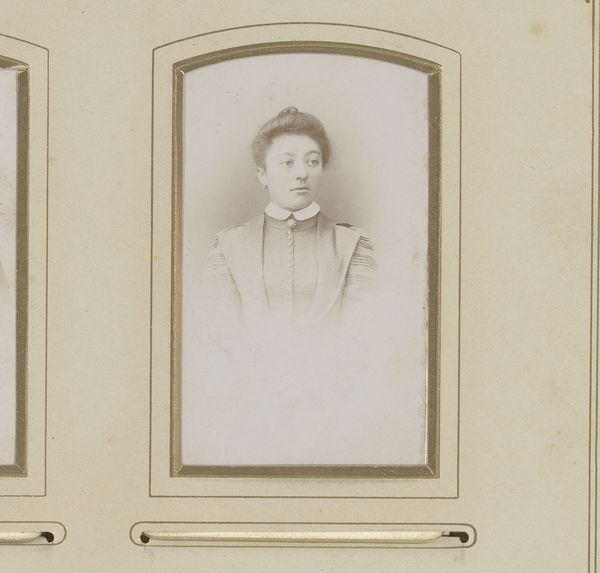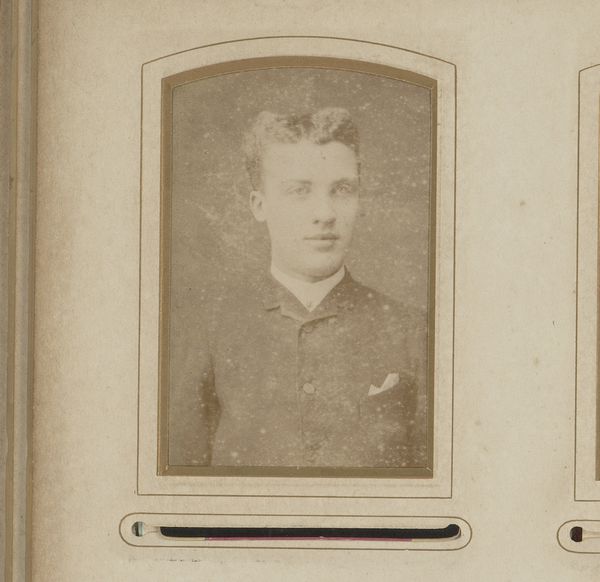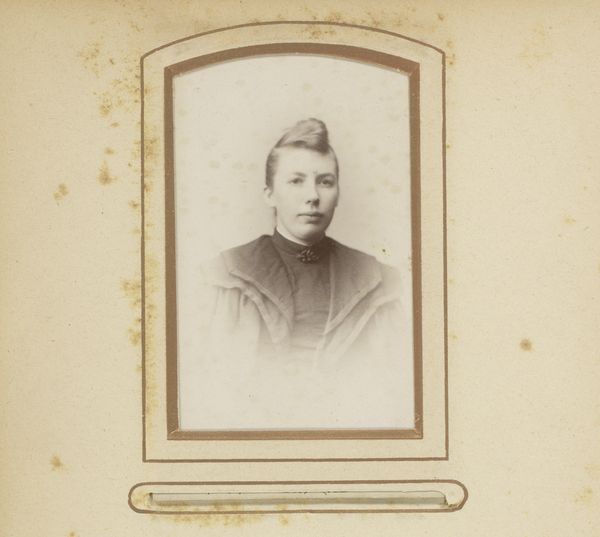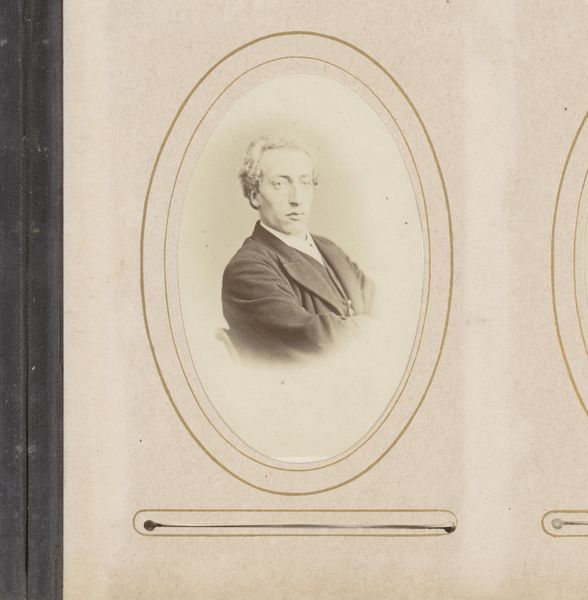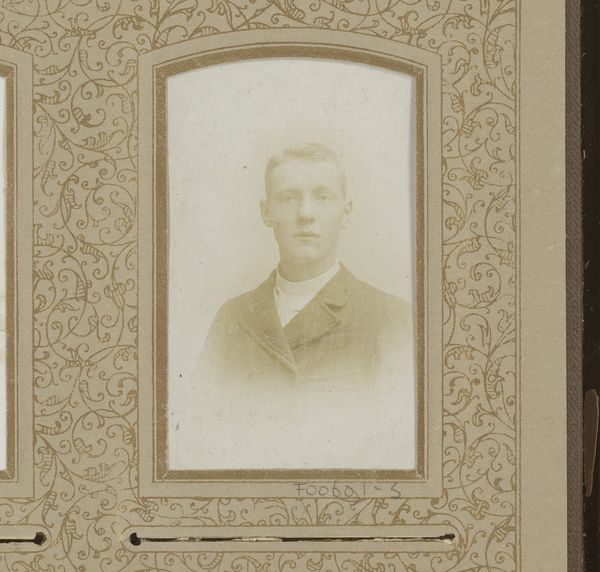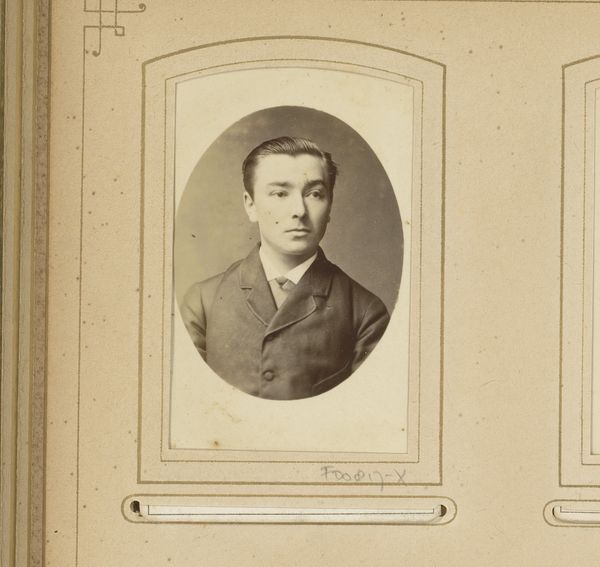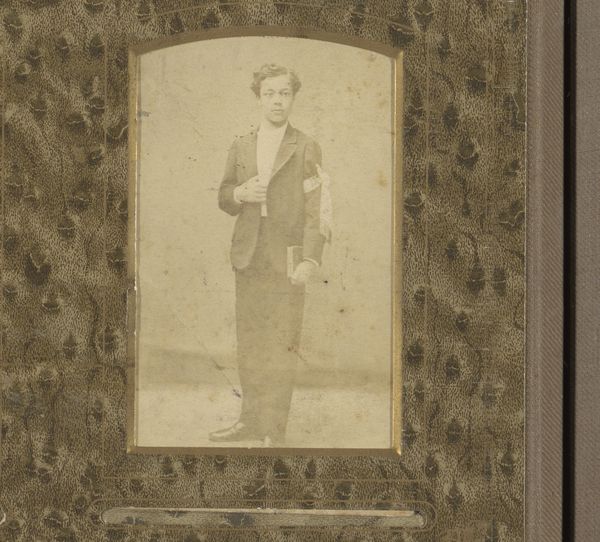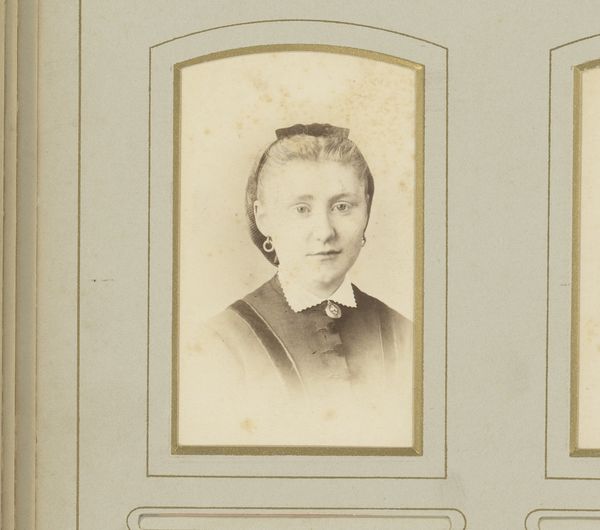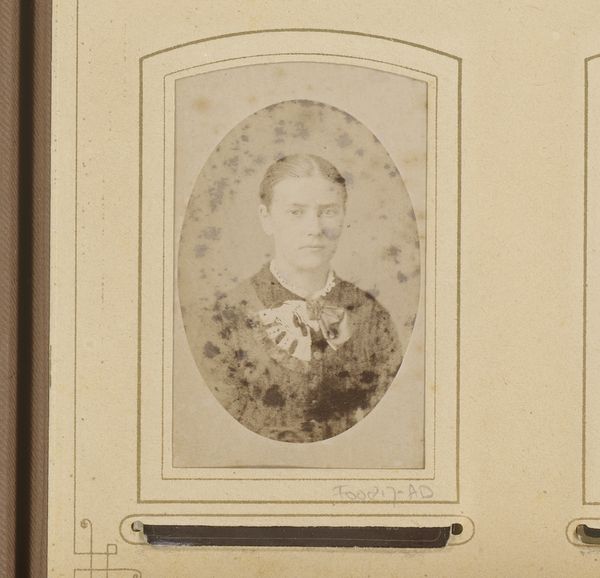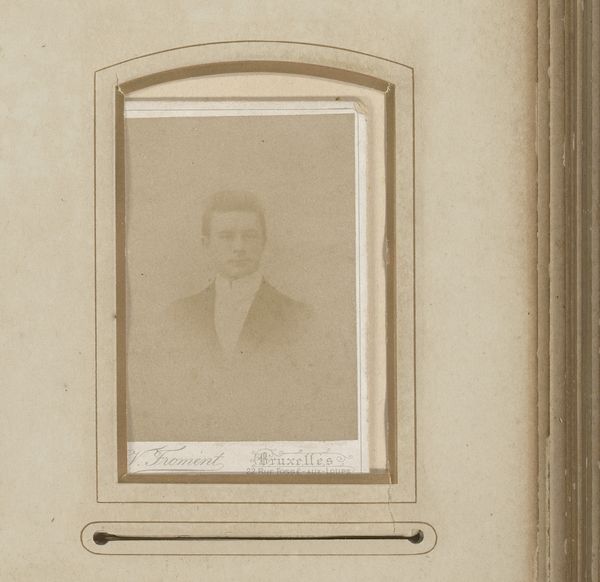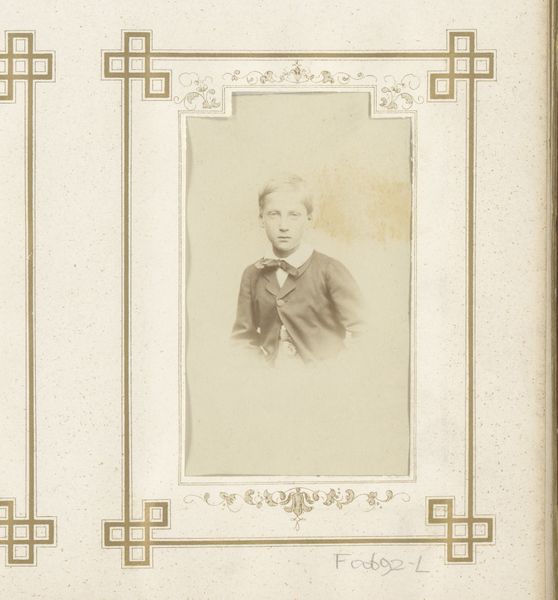
photography
#
portrait
#
photography
#
realism
Dimensions: height 81 mm, width 52 mm
Copyright: Rijks Museum: Open Domain
Editor: Here we have a photograph from 1884 by Wilhelm Ivens, titled "Portret van een jongen, aangeduid als Posthumus". The sepia tone lends it a certain formality, but there’s also a vulnerability in the subject’s expression. What compositional elements stand out to you? Curator: The work is fundamentally driven by its photographic qualities. Note the limited tonal range characteristic of early photography. This constraint forces attention onto the contours of the boy's face and clothing. The oval vignette acts as a framing device, isolating the subject. Consider how this compositional choice affects our reading of the portrait. Editor: I see how the oval shapes guide my eyes. The framing within the frame emphasizes the sitter. Is the blurred background intentionally de-emphasized so it can shift all focus on him? Curator: Precisely. Ivens’ skillful manipulation of focus – the plane of sharpest resolution aligning with the face – compels a singular focus on the subject. The relative softness surrounding it accentuates its contours by way of contrast. And consider how this sharpness brings forth a palpable, realistic quality in how we recognize the boy. Editor: So the technical aspects themselves construct the meaning and direct the audience? That’s helpful, thank you. Curator: Indeed. A rigorous visual analysis helps illuminate the techniques that work in harmony to generate effect and, ultimately, to realize meaning within the artwork. Editor: Now that I see the careful way this shot was designed, I can better understand why it makes me feel this sense of dignity from something that looks very simple at first. Curator: Indeed. Through a closer examination, one gains insight into how even seemingly straightforward techniques yield significant and lasting meanings.
Comments
No comments
Be the first to comment and join the conversation on the ultimate creative platform.
